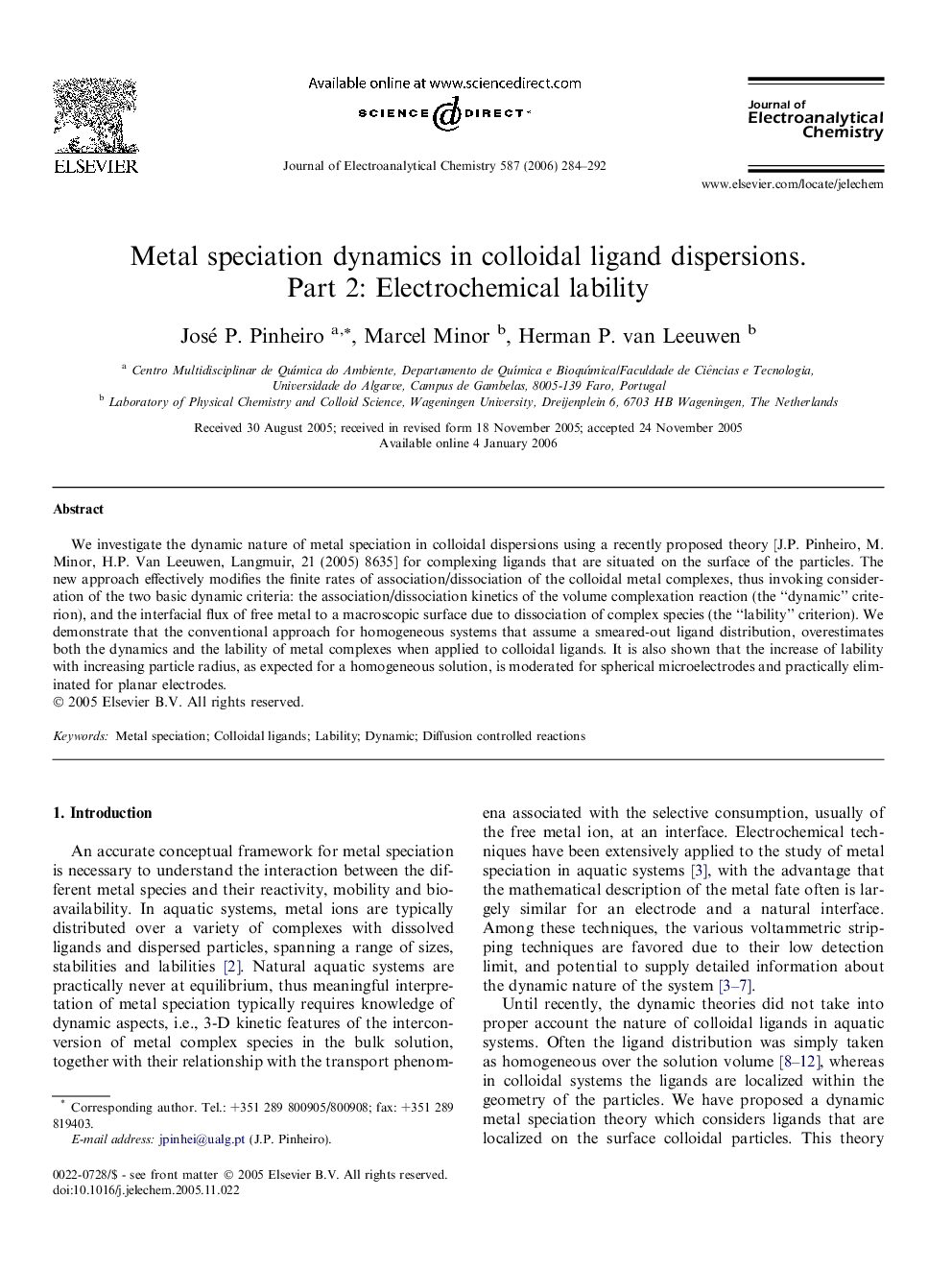| Article ID | Journal | Published Year | Pages | File Type |
|---|---|---|---|---|
| 221468 | Journal of Electroanalytical Chemistry | 2006 | 9 Pages |
We investigate the dynamic nature of metal speciation in colloidal dispersions using a recently proposed theory [J.P. Pinheiro, M. Minor, H.P. Van Leeuwen, Langmuir, 21 (2005) 8635] for complexing ligands that are situated on the surface of the particles. The new approach effectively modifies the finite rates of association/dissociation of the colloidal metal complexes, thus invoking consideration of the two basic dynamic criteria: the association/dissociation kinetics of the volume complexation reaction (the “dynamic” criterion), and the interfacial flux of free metal to a macroscopic surface due to dissociation of complex species (the “lability” criterion). We demonstrate that the conventional approach for homogeneous systems that assume a smeared-out ligand distribution, overestimates both the dynamics and the lability of metal complexes when applied to colloidal ligands. It is also shown that the increase of lability with increasing particle radius, as expected for a homogeneous solution, is moderated for spherical microelectrodes and practically eliminated for planar electrodes.
